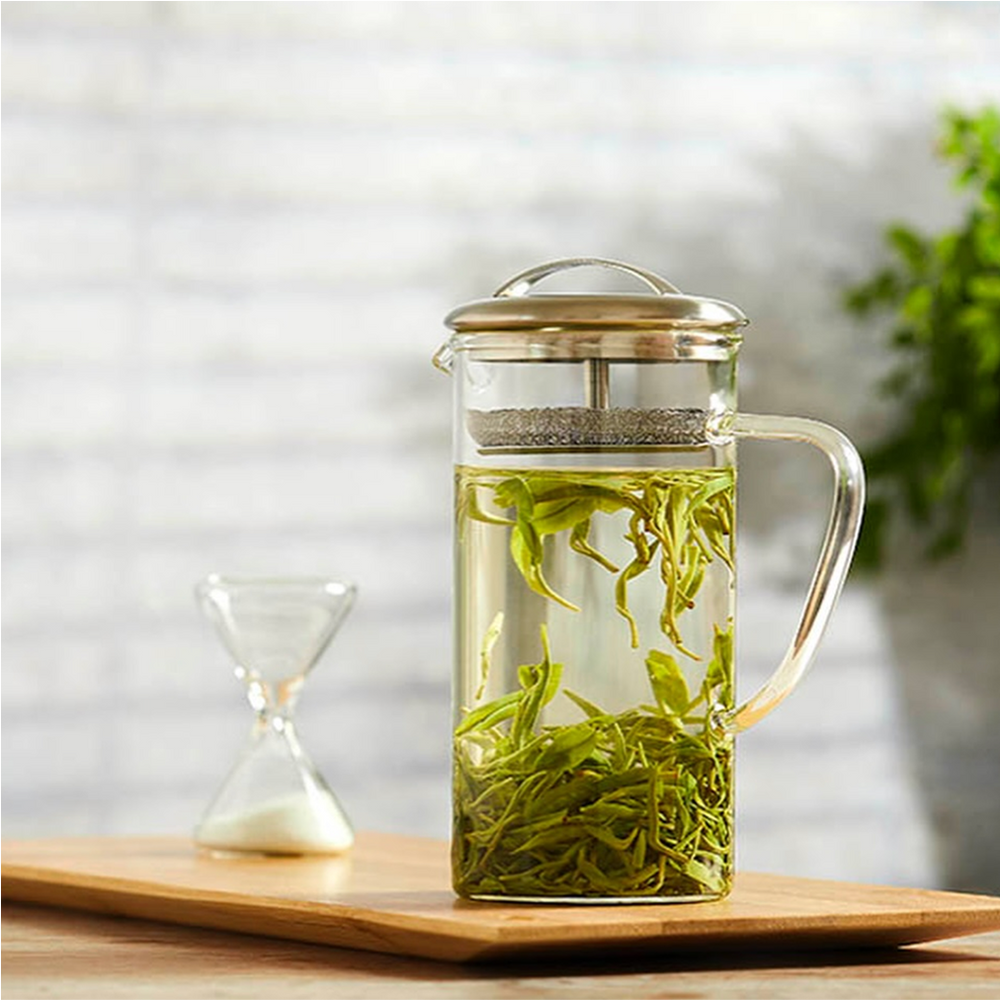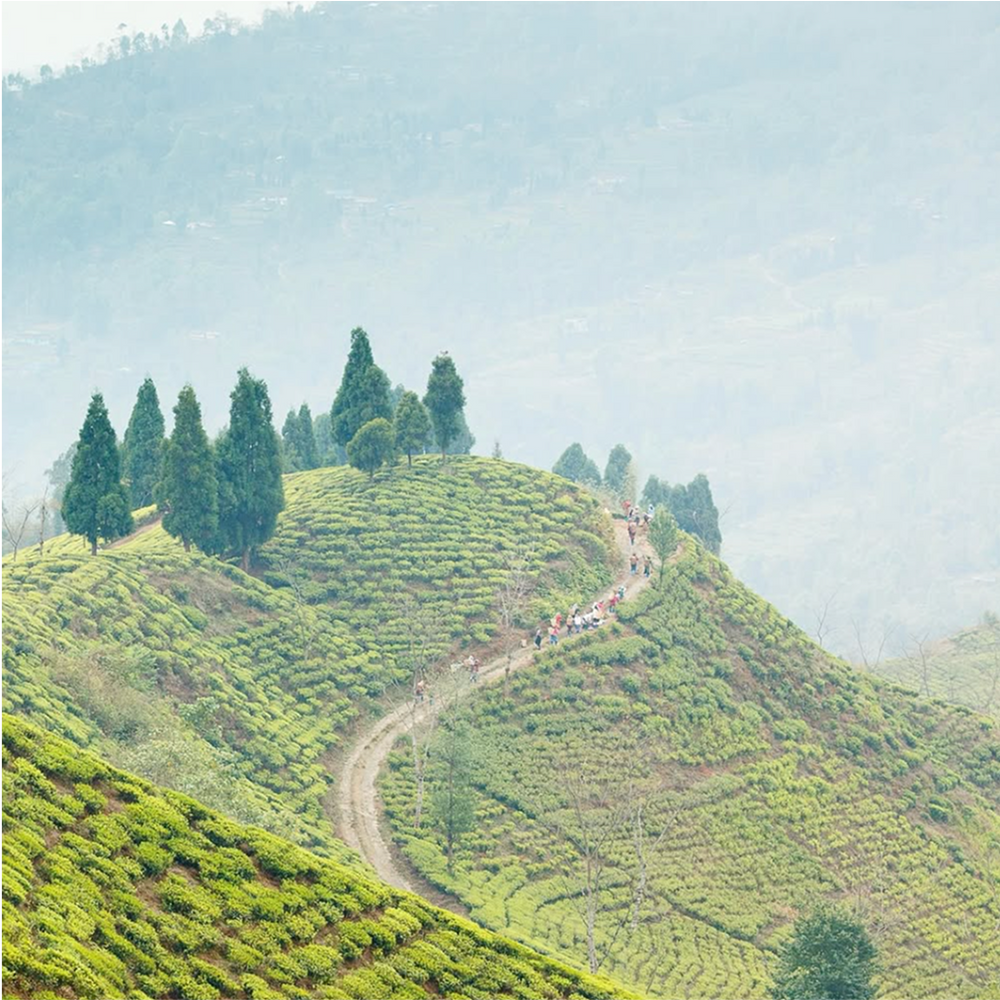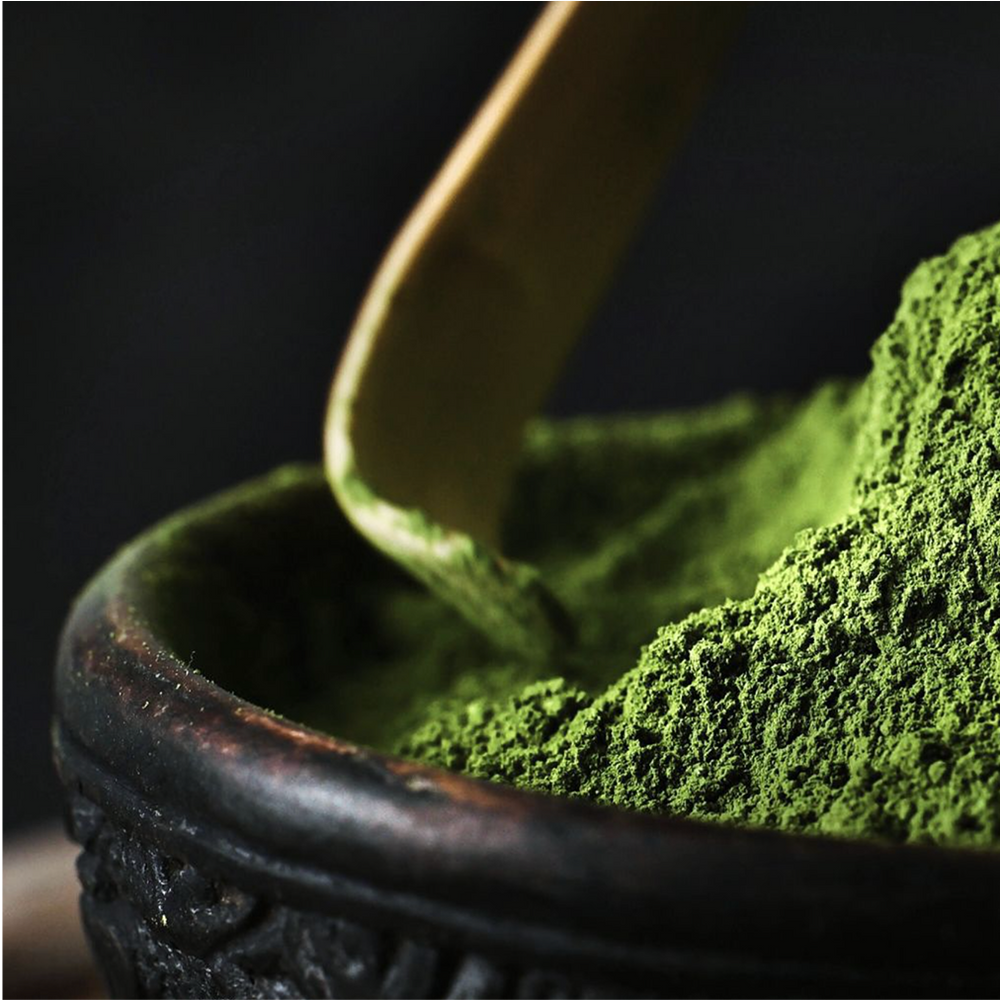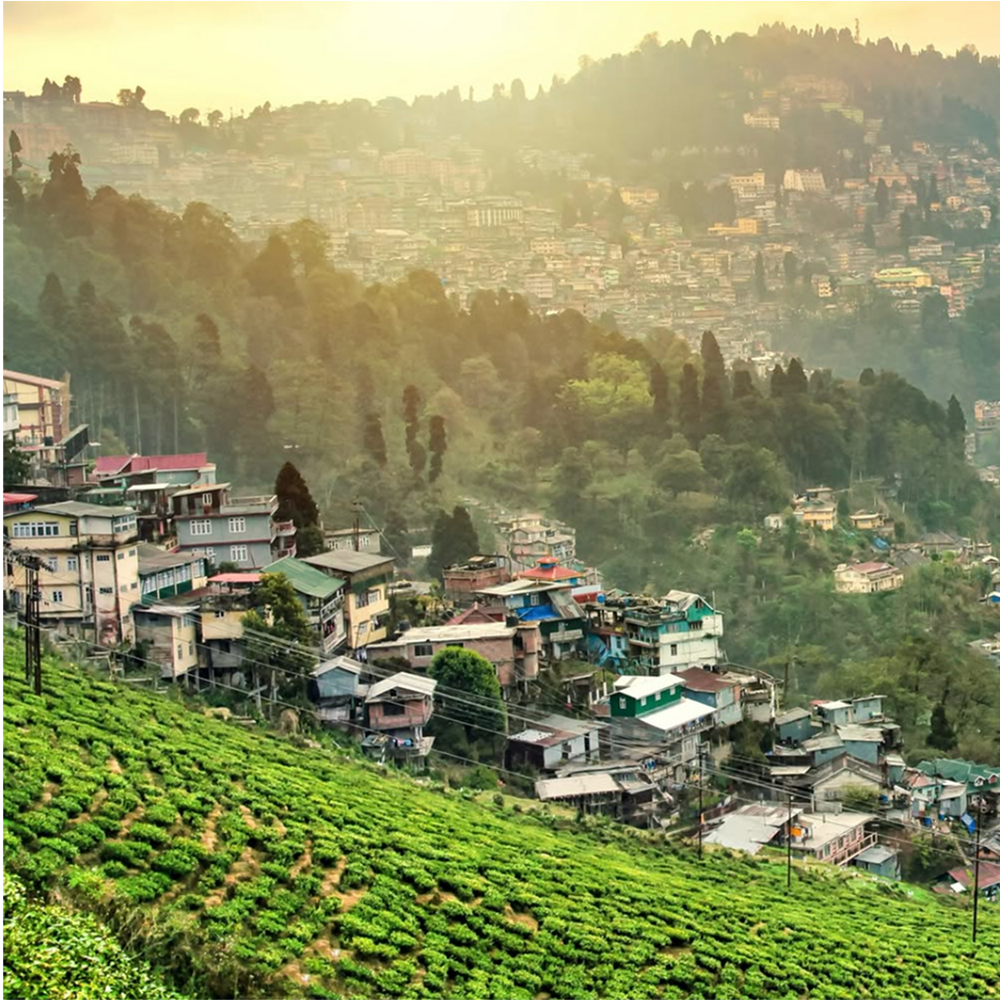By Felicity
They’ve been producing Gyokuro high in the Asahina Valley for 50 years, and they’ve just completed another successful spring season.
Ten miles from the Pacific Ocean and 250m above it on a plot of about 1 acre, the Miyazaki family has been producing Gyokuro tea for over half a century. Except for a brief period in World War 2 when it was given over to potatoes, the plot itself has been growing tea for around 300 years.
Mr and Mrs Miyazaki have centuries of family know-how on how best to tend the bushes, when to shade them and how long, how to bring out the perfect balance of sweetness and umami, and even what to grow alongside the bushes to encourage healthy soil.
The Miyazakis don’t use chemicals and, unusually in Japan, don’t use machinery for picking. They also grow bamboo, tangerines, and rice. Bamboo shoots are abundant every spring as the first teas are being produced, while the straw from the rice is used to build spring shading for the tea bushes. Tangerines are enjoyed as a sweet snack alongside the tea when it’s ready for drinking later in the summer.
Tom, our Head of Tea, met them in the garden last spring but this year we had to make do with a good internet connection. When I spoke to them from my makeshift home office in west London, Mr and Mrs Miyazaki were sat on a bench outside their wooden workshop. To make the most of an unseasonably dry afternoon, they’d dragged a table outside to make tea as we chatted…
Mrs Miyazaki's focus is on the harvesting of leaves and looking after their team of hand-pickers.
Mr and Mrs Miyazaki
It was an unseasonably dry day when we spoke and so Mr Miyazaki sat just outside his wooden workshop and drank his tea as we chatted.
A changing world
The Miyazakis are being kept busy by some noticeable changes in the climate. More and more, they are seeing unseasonably cold spells in April – luckily, this year, the bushes weren’t damaged – while warmer winters now mean the bushes don’t get a proper rest. They keep growing, which means spring shoots come earlier and are even more at the mercy of cold weather. (We heard something similar from Mr Lui, who makes our Jade Sword in China’s Hunan province.) Despite the odds, 2020 has been a great production season and the Miyazakis are delighted with the quality of the tea.
“The hardest thing to harvest is people!”
In Asahina, tea is traditionally hand-picked by women, and for 2020, it’s still the case in the Miyazaki garden. Not only are the slopes too steep for the picking machines, which have become a common site across tea gardens in Japan over the last decade, but Miyazaki’s focus on producing a high-quality Gyokuro means the picking needs to be more precise. Mrs Miyazaki works with a team of local women who will pick a long picking of leaf and stem, with the stem tender enough to be included in the production, because of the shading.
The average age of the tea pickers has been increasing over the past generation as young locals move to the city. They do not see value in working in the tea industry – this story we’ve also heard in Darjeeling, in Ali Shan.
Here, you can see a combination of dark netting and straw covering that they use to shade the bushes.
The path leading up to the wooden workshop - notice the steep slopes. The bushes have just been pruned after the spring picking.
Underneath the shading, the leaves are getting darker and darker green, as the lack of light means extra chlorophyll, which generates an umami taste.
Inspiring the future tea masters
“It’s one of the most fun parts of the season”
The local government is trying to do something about the labour shortages and the reputation of the work of a tea farmer, though. To inspire new generations of tea professionals, Mrs Miyazaki told me how much fun they have when school children come to the area and spend a day on the farms as part of their elementary curriculum. It’s compulsory for every child to visit and learn about tea growing, production, and making – in the hope that they will appreciate this traditional industry.
Picking the leaves - notice it's a multiple leaf and stem picking; because of the careful shading and cultivation the stems are considered tender enough to be included.
The Miyazakis overlook the garden, and the bushes are shaded using rice straw netting.
Mr Miyazaki oversees the processing of the leaves in their wooden workshop.
Looking after the team
“My day starts at 2.30am every morning – I have to prepare the lunchboxes for our pickers!”
Care and craft extend beyond the bushes to everyone involved in the production. During the season, Mrs Miyazaki looks after the pickers and carries the leaves down to the workshop, where Mr Miyazaki gets to work with four other team members steaming and rolling the fresh leaves.
I asked Mrs Miyazaki what had been on the menu this week. She told me the best lunches for energy and refreshment – and for enjoying with Gyokuro – are sour foods, home-grown plant pickles and the bamboo shoots growing nearby. There’s also yokan, a red bean cake when she feels indulgent.
As we talk, Mr Miyazaki repeatedly makes small cups of tea using a traditional porcelain tea bowl. He says he drinks at least two litres of tea a day like this. I couldn’t finish without asking him for his tips.
“Take time, don’t hurry. Be calm. Relax”
The Miyazakis drink their Gyokuro in very small, 50ml cups, infusing what we decided was about 1 tablespoon of leaf in small porcelain tea bowls with warm water (around 60ºC). Sittings tend to last about an hour, and they enjoy around 10 cups per sitting, extracting the sweetness and umami little by little. “Don’t forget the golden drops,” says Mr Miyazaki. Pouring all of the infusion out is a key part of the flavour experience.
As we spoke, the Miyazakis prepared their tea in small porcelain bowls. Repeated short infusions ensured that all of the umami, sweetness, and green flavours were enjoyed.
Gyokuro and Yokan, a type of red bean cake. Mrs Miyazaki's recommended pairing.
Don't forget the golden drops! Advice from Mr Miyazaki on getting the best flavour from his Gyokuro.
Mrs Miyazaki told me I should try it cold – it’s a popular way of drinking it in Japan. I’m definitely going to experiment…
SHOP:
Gyokuro
One Cup Teaiere
Tea Time




